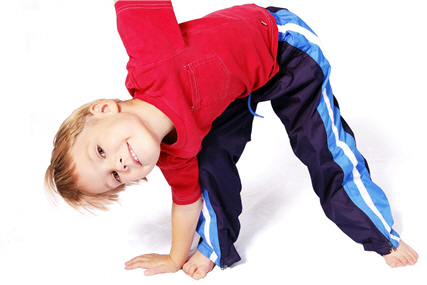Total Physical Response (TPR) is a method that was developed by James Asher in the late 1960s, with the goal of helping students acquire a second language.
The main assumption is that a second language can be learned in the same way as the first – through the same natural processes. So, TPR tries to mimic these processes by requiring students to respond to commands, which in turn require physical movements. Naturally, this method was embraced by ESL teachers back then, but it is still quite popular today, particularly when teaching children or beginners.
The advantages:
ESL activities with TPR are tremendous fun for students, even for grown ups once they become less self-conscious. But it is precisely because children are less self-conscious about moving their bodies around the classroom, that these activities are excellent ways to get young learners up and about. Although they require more out of teachers, physically-speaking, they require less preparation. Finally, activities with TPR are great for kinesthetic learners who need more action or hands on activities.
But does it work? Can we really maximize student learning through TPR?
Try some of these TPR activities and see for yourself!
-
1
Simon Says (with a spin!)
Clearly, it’s a classic among TPR activities, one that is more commonly used to teach the parts of the body. But why not go beyond the simple, “Simon says touch your nose” and try more complex commands? Say you are teaching your students how to give directions. Clear up a space in the classroom, one your students can easily maneuver around. Your commands could be directions: “Simon says turn right, Simon says go straight ahead.” Create a mini neighborhood! Place a flashcard or picture on each of your students’ desks: a bank, a pharmacy, a shopping center, etc. Arrange the desks so they create “streets”. Students take turns giving each other directions to and from locations in their neighborhood.
-
2
Charades
Another classic game, this one is best suited to action verbs and sports. For example, to teach sports you must first introduce each with flashcards, act out each of the sports yourself, and have students say each out loud with you. Then you divide the class into two teams. Each student must take a flashcard, picture or card with a sport written on it, and pantomime the movements involved in playing the sport so that his or her teammates can guess what it is. Encourage them to be silly or exaggerate if they have to. Teammates have to answer in complete sentences: you are playing basketball.
-
3
Songs
Young ESL learners love to sing songs, but if you add movement or miming, they’ll enjoy them so much more. It is, in fact, difficult for most children to sing songs while sitting absolutely still. Singing and moving comes naturally to them. So, why not take advantage of this and incorporate lots of songs with movement? Here are some great songs you can use or adapt to suit your needs:
-
- Here We Go ‘Round the Mulberry Bush – Use the original song and have your students mime the washing of clothes, ironing, etc., or replace these actions with personal hygiene (brush our teeth, wash our hands, comb our hair, etc…)
- Head, Shoulders, Knees and Toes – A classic song used to teach kids the parts of the body.
- Wheels on the Bus – The wheels on the bus go round and round and so should your students - go round the classroom! Have them line up and go around the classroom in a single or double file, or arrange their seats so that they resemble a bus.
-
-
4
A Stroll around the Classroom
This activity is great for kids and adult students. You'll need several objects or props/realia - as many as you'd like to use. First, you pantomime a series of actions while you say the phrases. Then you say the phrases and ask a student to pantomime the actions. You can try this with several students and use different objects. Finally, they should do it on their own and walk around the classroom interacting with objects. Try something like this:
-
- You open your bag.
- You look inside.
- You take out a pencil case.
- You open it.
- You close it.
- You put it in the bag.
- You look at your book.
- You open it.
- You close it.
- You touch your ear.
- You find your pencil!
-
-
5
Mime Role Plays
These are also a lot of fun for adult students! Give each student a role to act out but tell one of them that they’ve lost their voice. Tell this student what situation he or she has to act out, but don’t tell the other student what it is. For example:
Student A – You need to find a pharmacy and you ask someone for directions. You have lost your voice, and you can’t say a word.
Student B – You will be stopped in the street by someone who needs directions, but this person can’t speak, so you must interpret their gestures to find out where they need to go.
P.S. If you enjoyed this article, please help spread it by clicking one of those sharing buttons below. And if you are interested in more, you should follow our Facebook page where we share more about creative, non-boring ways to teach English.








